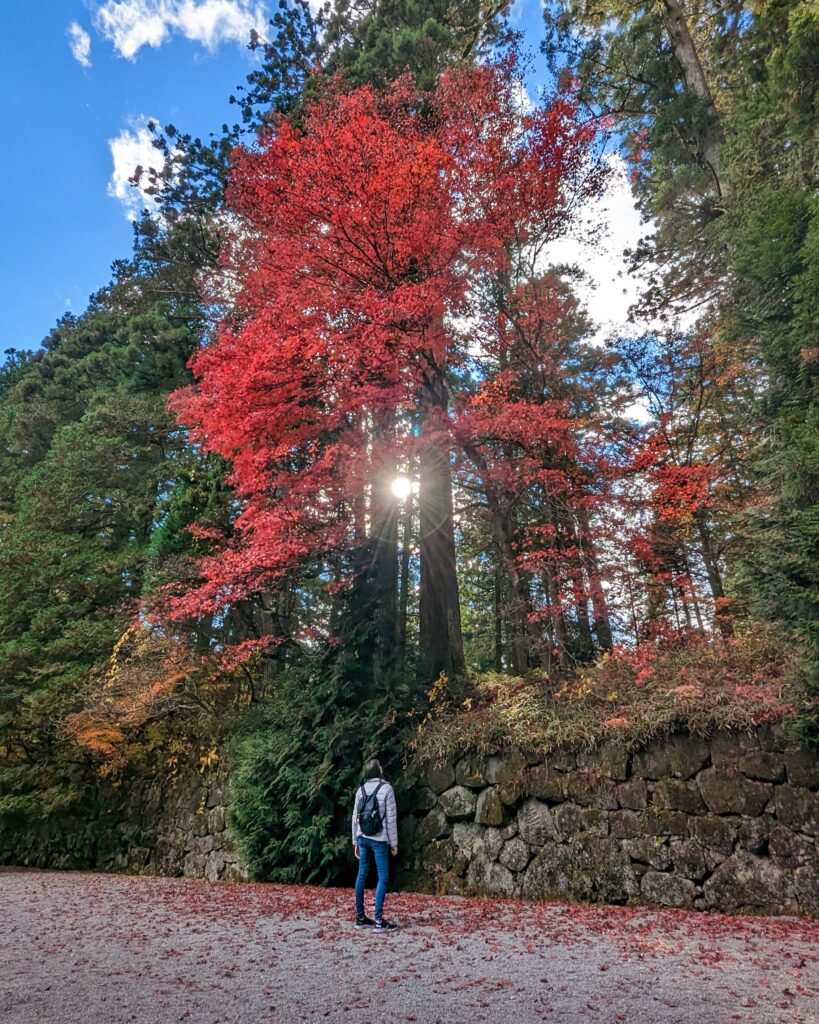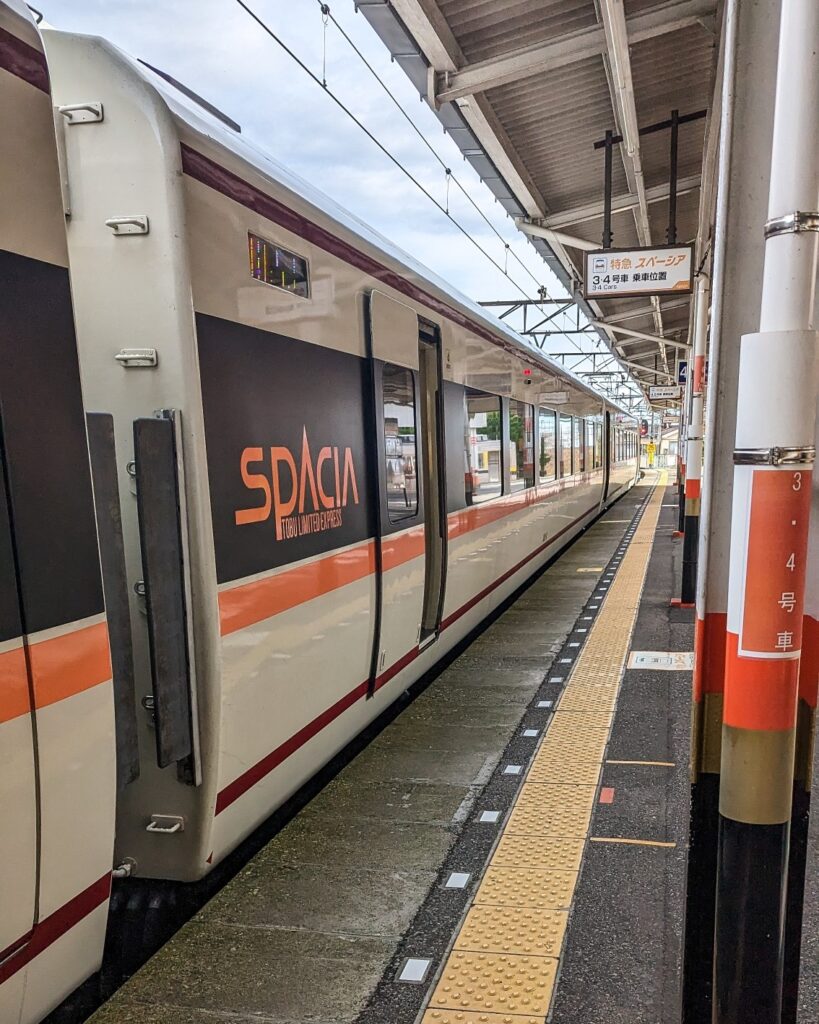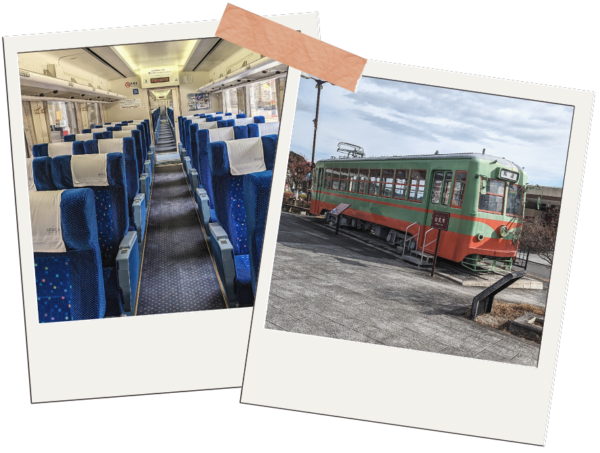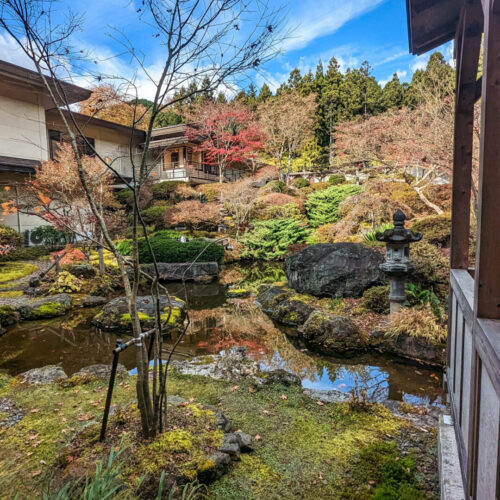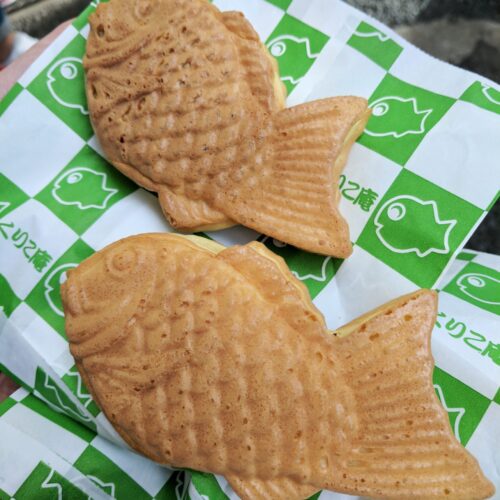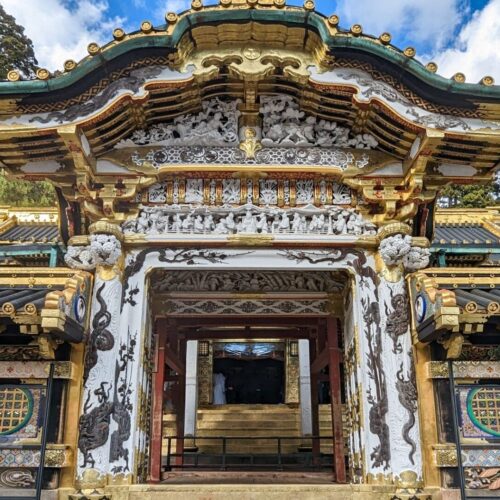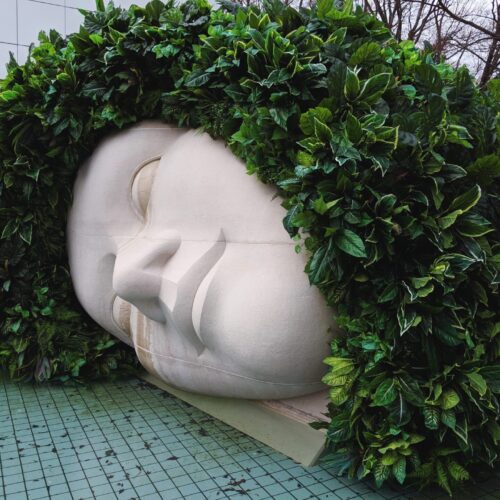Nikko is best known as the location of Toshogu Shrine, a memorial for Tokugawa Ieyasu. Ieyasu was the founder of the Tokugawa Shogunate, which ruled Japan for around 250 years. Aside from the ornately decorated shrine, Nikko is also a scenic escape with beautiful hiking trails, hot springs, mountains, lakes, and an abundance of waterfalls.
Nikko is the perfect escape from the hustle and bustle of Tokyo and a wonderful place to catch a glimpse of the stunning fall colors. Here is your travel guide to Nikko.

Language: Japanese is the national language of Japan.
While English is widely spoken in cities and tourist locations, knowing a few Japanese phrases and some Kanji is highly beneficial.
Currency: The currency of Japan is the Japanese Yen (¥).
Japan is a cash society, and while more places in the city are accepting cards, you should always carry cash during your travels in Japan. ATMs are available in 7-Eleven for cash withdrawal.
Tip: bring a coin purse; you will likely be carrying a lot of change.
Major Airports:
Tokyo: Narita (NRT) & Haneda (HND)
Osaka: Kansai International Airport (KIX)
Best Time To Visit: March to May and October to November
During this time, there is little rain, and temperatures are mild. The winters are cold but manageable with proper clothing. Avoid the summer if possible due to high temperatures and high humidity, with typhoon season peaking in August and September.
If you visit in late March or early April, you will see the cherry blossoms. If you visit in mid-November, you will see the vivid fall colors.
Getting To Nikko
As is often the case in Japan, the easiest and quickest way to get to Nikko is via the train system. You have a few different options that cost varying amounts but take roughly the same amount of time.
Tobu Railway
The Tobu trains for Nikko leave from Asakusa Station. You can take the limited express trains, which are more expensive but faster, or the local trains, which are cheaper but slower.
The Limited Express typically has no transfers and will take about two hours to arrive in Nikko. The local trains require a few transfers and take about two and a half hours to arrive.
Tobu Railway offers various Nikko Passes, which include round trip fares from Asakusa station; you can upgrade the round trip fare to the limited express for an additional fee. The Nikko Pass is often the best bang for your buck as it also includes transportation around Nikko.
(see “Getting Around Nikko” for more info on the various Nikko Passes)
Japan Railway (JR)
You can take the JR Tohoku Shinkansen from Tokyo or Ueno station and transfer to the local JR Nikko Line at Utsunomiya Station. With this method of travel, the trip takes a little under two hours and costs ¥5,500 one way. Due to the high cost, this option is most viable if you already are using a JR pass.
Alternatively, you can take a limited express train from Shinjuku Station directly to Tobu Nikko Station. This trip takes approximately two hours and costs ¥4080 one way. The JR Pass does partially cover this method of transportation, but for full coverage, you would need one of the area-specific JR Passes.
Getting Around Nikko
Getting around Nikko is quite easy; there is a combination of a single railway line and eight bus lines.
If you are in Nikko for a quick day trip, chances are you will be hanging around the World Heritage Area, which can be accessed by seven of the eight bus lines. You almost can’t go wrong by just hopping on whatever bus shows up first at Tobu-Nikko Station.
Beyond the World Heritage Area, it becomes slightly more complicated. A single bus line can take you out to Chuzenji Lake and the onsen area, while the train line can take you north to Tobu World Square.
Nikko is relatively small, and once you are in the general area you want to visit, walking may be your best bet to quickly get around to all of the sites you want to see! We almost exclusively walked after taking the bus from Tobu-Nikko Station to the World Heritage area.
Download the Tobu Top Tours bus map, and you will be set for your trip!
Tobu Nikko Pass
The Tobu Nikko Pass is a discount pass that is offered by the Tobu Railway company located in Asakusa. Passes can be pre-purchased online, including Limited Express passes, and picked up from the Tobu Railway office in Asakusa Station. The pick-up process is quick and easy with the office located right inside the entrance of the station.
| Pass Type | Base Price | With Limited Express | Validity Period |
|---|---|---|---|
| Nikko Pass – World Heritage Area | ¥2,120 | ¥4,840 | 2 Days |
| Nikko Pass – All Area* | ¥4,160 – ¥4,780 | ¥6,880 – ¥7,500 | 4 Days |
* The Nikko All Area Pass changes price depending on the season. December through mid-April are cheaper.
The two Nikko Passes cover different areas around Nikko. If you visit for a single day, you will likely only need the World Heritage Area Pass. However, if you intend to spend a few days in Nikko and thoroughly explore the area, you will want the All Area Pass.
Both passes cover local travel in their specified area; all you have to do is show the pass when you board and depart a bus or train! The passes offer discounted admission to Tobu World Square and Edo Wonderland, and the All Area pass includes a sightseeing cruise on Lake Chuzenji.
You can take a deep dive into the different passes and purchase your pass on the Tobu Top Tours website.
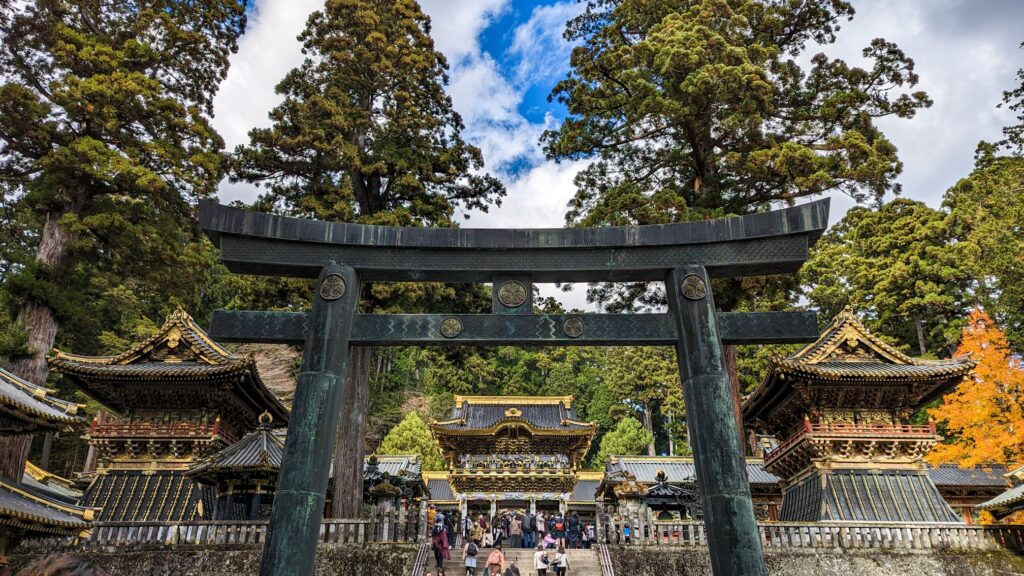
Where to Stay in Nikko
Nikko is relatively small, so you should stay in an area that best suits the activities you plan to partake in. Some of the best places to look are near Lake Chuzenji, Toshogu Shrine, or Tobu-Nikko Station. These areas have various hotels to choose from and are easy to access. Below are a few suggestions, including the ryokan we stayed in during our trip! Check out the map at the bottom of this guide for additional accommodation options.
- Hoshino Resorts KAI Nikko
Hoshino Resorts KAI Nikko is next to Lake Chuzenji and offers a modern ryokan and onsen experience! The rooms have a stunning view of the lake, and traditional kaiseki meals are served in semi-private rooms. Rooms range in price from approximately ¥19,000 to ¥36,550 per person per night. - Okunoin Hotel Tokugawa
Okunoin Hotel Tokugawa is located near the World Heritage area in a quiet wooded area off the main road through Nikko. The hotel is a ryokan with half board (Dinner and Breakfast), and many rooms include private open-air baths. The hotel can be booked directly through the website, which is available in Japanese, English, and Chinese. Rooms range in price from approximately ¥18,920 to ¥46,200 per person per night. - Fairfield by Marriott Tochigi Nikko
The Fairfield is a western hotel option for those who want to remain faithful to a particular brand or use points. You can’t go wrong with what you know. The rooms are spacious and modern. This hotel may be out of the way from many local attractions, but out of the way is still very close via the bus route! Rooms range in price from approximately ¥16,600 to ¥20,000 per night
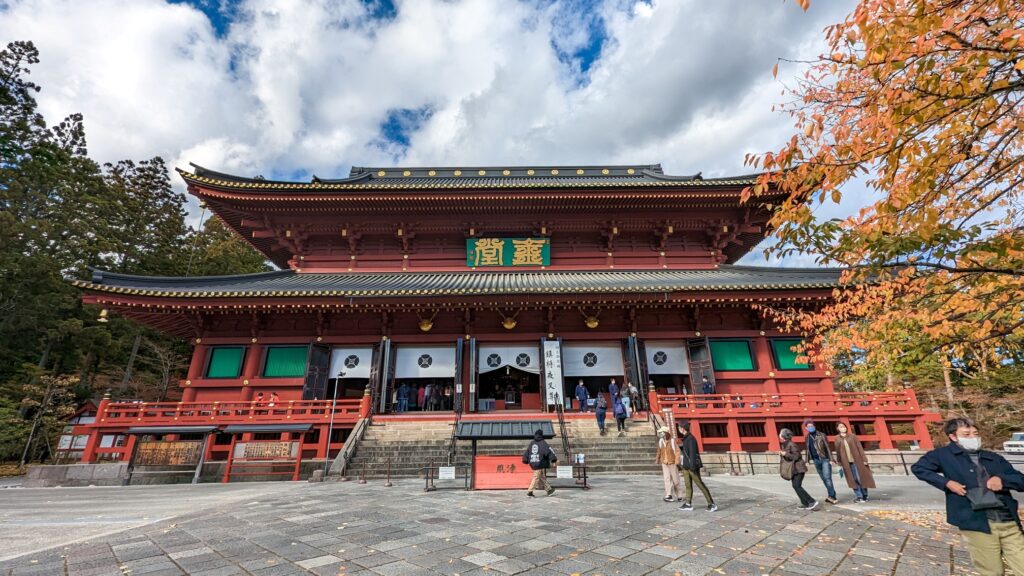
Things to do in Nikko
There are a few key areas that you should visit while in Nikko. Each of these areas has a variety of things to do, which gives you the ability to pick and choose which areas you are most interested in and fit your trip the best!
- World Heritage Area
The World Heritage Area is often the main draw when visiting Nikko. This area is located right outside the main town and can easily be reached by bus or foot. This area is home to Nikko’s many shrines and temples, including Toshogu Shrine. You can also find Shinkyo Bridge in this area. - Tobu World Square/Edo Wonderland
Tobu World Square and Edo Wonderland are theme parks that make their home in Nikko. Tobu World Square is an architecture theme park that houses replicas of famous buildings. While Edo Wonderland is a cultural theme park that lets you step back in time to the Edo Period (17th Century). There are also a few onsen in this area! - Chuzenji Lake and Onsens
Chuzenji Lake and the Onsen area is where we leave behind the historical shrines and temples and enter into the natural beauty Nikko offers. This area is home to Kegon Falls, the Natural Science Museum, and various hikes and onsen. You can catch a sightseeing cruise on the lake as well!
